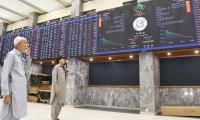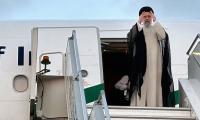KARACHI: Pakistan will miss the current fiscal year’s export target set in a three-year trade policy by a wide margin, senior industry officials said.
Last government set exports target of $35 billion for the year ending June 30, 2018, under the strategic trade policy framework of 2015-18. It, however, later realised that export earnings could be around $23 billion for fiscal 2017/18, given a constant downturn in exports.
Total exports, in the fiscal 2016/17, amounted to $20.45 billion, down 1.63 percent over the preceding fiscal year, according to the Pakistan Bureau of Statistic.
Yakoob Karim, president of Lasbela Chamber of Commerce and Industry agreed that exports would clock in between $23 to $24 billion for the current fiscal year, “not even the level the country had achieved about one decade ago”.
“Exports target announced in the trade policy could not be achieved,” Karim said. Trade policy could not help in increasing exports during the past three years, rather exports continuously declined.
Karim said exports declined from $25 billion a few years earlier. “Exports were adversely affected due to high energy costs, exchange rate appreciation and high import tariffs on inputs.”
Sindh Industrial and Trading Estate Association of Industry President Jawed Bilwani said value-added textile industry is facing liquidity crisis as its refund claims worth hundreds of billions are stuck. He weighed in behind the $24 billion export forecast. Falling exports and rising imports are the principal reason behind widening current account deficit that is expected to reach $16 billion in FY2018 as against the target of nine billion dollar.
Exporters said government ignored their budget and policy proposals in the last few years, which rendered local produce uncompetitive in the world market.
The major challenges faced by the export-oriented industry are unstable prices of commodities in the international market, macroeconomic instability, high cost of doing business and political uncertainty.
Textile industry is facing strong competition from the regional competitors, including Vietnam, Bangladesh, India and China as well as from the global players, such as American and European textile industries.
In January last, the government had unveiled Rs180 billion trade incentives package till June to boost exports. The incentives were extended up to June 30, 2021. The package is aimed at improving competitiveness of textile and non-textile export sectors in the international market.
Analysts said businesses should assume some responsibility instead of relying on government for everything. Outdated machinery too hurt the country’s exports, they said. “It would not be possible to remain competitive in export market unless upgradation in industry is undertaken,” an analyst said.
A representational image showing an oil refinery. — AFP/FileKARACHI: Pakistan Petroleum Limited has announced a...
P@SHA Chairman Zohaib Khan was the esteemed Chief Guest at Aptech 2023. — X/PASHAORG/FileKARACHI: Muhammad Zohaib...
PSX marked the listing of the Mahaana Islamic Index Exchange Traded Fund with a gong ceremony on April 23, 2024. —...
FPCCI Regional Chairman and VP Zaki Aijaz while speaking during a round table discussion on the challenges and...
This representational image shows Gold bars. — AFP/FileKARACHI: Gold prices in the local market fell by Rs7,800 per...
Security personnel walk past the US Federal Reserve building in Washington, DC on Oct 22, 2021. — AFPNew York:...







